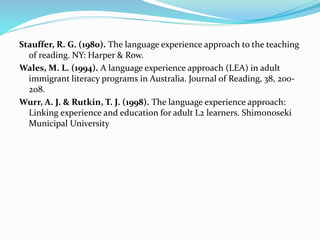The document discusses the language experience approach, a teaching method that uses students' own words and experiences to develop reading and writing skills. In this approach, students dictate stories about personal experiences to the teacher, who writes them down. The stories are then used as reading material to help students make connections between oral and written language. Key aspects of the approach include developing vocabulary and comprehension through repeated reading of self-generated texts, as well as follow-up lessons on grammar, spelling, and other skills. The approach draws on principles of learning from the familiar to unfamiliar and linking instruction to students' lives.


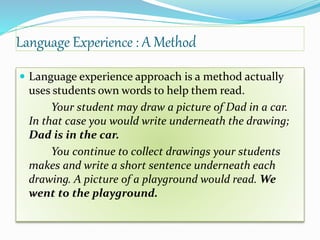
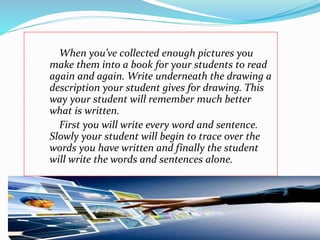
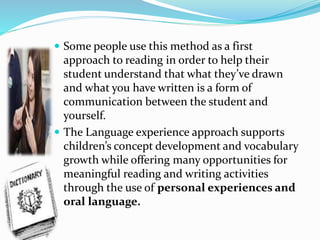



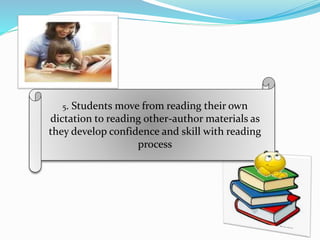

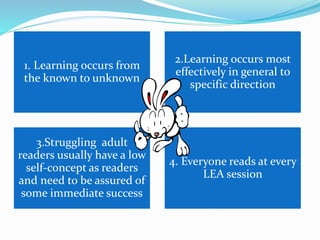
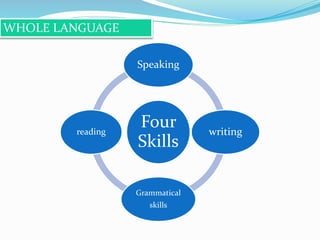

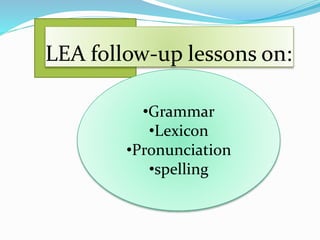
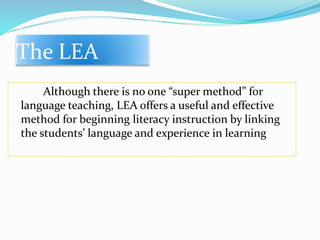
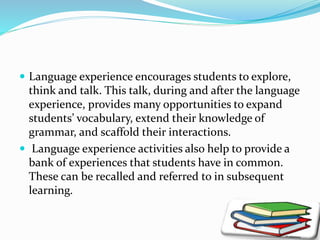



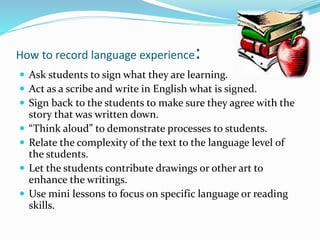


![Herzberg, B. (1994). Community service and critical teaching. College
composition and communication, 45, 307-319.
Huey, E. B. (1908). The psychology and pedagogy of reading. New York:
Macmillan. [Republished (1968) by M.I.T. Press in Cambridge: MA]
Jones, E. V. (1986). Teaching reading through experience. Life Learning, 9(7),
Lamoreaux, L., & Lee, D. M. (1943). Learning to read through experiences. NY:
Appleton-Century-Crofts. Morris, R. (1979). Success and failure in learning to read.
Hammondsworth: Penguin.
Nessel, D. D., & Jones, M. B. (1981). The language-experience approach to reading: A
handbook for teachers. NY: Teachers College Press.
Peck, W., Flower, L., & Higgins, L. (1995). Community literacy. College composition and
communication, 46, 199-222.
Ringel, H. (1989). English as a second language: Language experience approach-instructional
guide and ESL reader. Philadelphia: National Service Center. Educational
Resources Information Clearinghouse Document No. 318 275.
Spinner, J. (1997, March 13) Columnist’s criticism of composition courses inaccurate,
wrongheaded. Arizona Daily Wildcat, p. 4](https://image.slidesharecdn.com/languageexperience-140922095623-phpapp02/85/Language-Experience-Approach-23-320.jpg)
